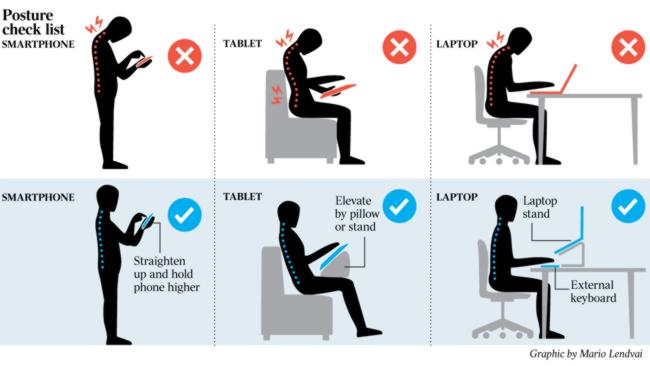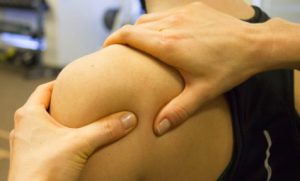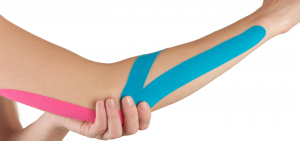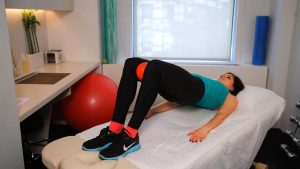No two patients are alike: Posture, biomechanics and injury vary from person-to-person. Our approach to assessment and treatment is patient-specific and individualised.
Often the source of the problem is in a different area to the site of pain. Finding the source means fewer treatments, less recurrence, and better outcomes.

To achieve this we offer:
– Detailed assessment
– Analysis of movement dysfunction
– A skilled hands-on approach
– Postural & movement correction
– Restoration of muscle imbalances
– Manual therapy techniques
– Core stabilisation & creative exercise progression
Let’s start with a Biomechanical Assessment:
Our muscle balance is influenced by gravity and a variety of internal and external forces. Abnormal forces can result in abnormal postures or loading. Also, abnormal postures (sitting slumped, standing with one’s weight on one leg, carrying a heavy bag or a child) that are sustained, result in muscle imbalances. Muscle imbalances need to be corrected to reduce pain and improve function and performance.
As biomechanically minded physiotherapists, we have a thorough knowledge and understanding of how to correct abnormal loading and postural dysfunction. Through thorough and targeted assessment we can find the source of the pain, which is often a distance from the site of pain.

Now let’s move onto the Therapeutic Techniques that may be utilized during treatment:
Manipulative Therapy
This is a clinical approach utilizing skilled, specific hands-on techniques, including manipulation, or mobilization, and used by a physiotherapist to diagnose and treat soft tissues and joint structures for the purpose of modulating pain.

Manipulative therapy is also used to:
– increase range of motion
– reduce or eliminate soft tissue inflammation
– induce relaxation
– improve contractile and non-contractile tissue repair and extensibility
– facilitate movement
– improve function
All of this optimises conditions for correcting posture and performing strengthening exercises
Strapping
Strapping, or taping, is a rehabilitation technique that is used to facilitate and compliment the body’s natural healing processes. Strapping varies in many ways; from the type of tape used, to the direction of placement & tension applied. It can provide support and stability to muscles, joints and all forms of soft tissue. It has been shown to have positive physiological effects on the skin, lymphatic and circulatory system, fascia, muscles, ligaments, tendons, and joints. Strapping is often used in conjunction with other physiotherapy treatments and modalities during the rehabilitative process, to support or maintain a postural correction and facilitate a reduction in pain.

Strapping is regularly used as a preventative measure, and can lessen the likelihood of acute injuries occurring. Many top athletes prophylactically tape particular joints to minimize risk of injury during training & competition e.g. tennis players might tape their ankles. Rigid strapping is often used to support and stabilize ligament and joint injuries. Kinesio taping can be used to improve swelling, as well as to activate or to off load muscles.
Exercise Prescription and Rehabilitation
No two patients are alike. A variety of factors affect patient management. These include the patient’s genetics – height, bone structure and flexibility, to name a few. Predisposition for genetic conditions (such as arthritis) also influences management and outcome. Other factors include physical makeup, the clinical findings on assessment, lifestyle, attitudes & beliefs as well as the patient’s functional and sports demands.
Consequent to this, exercise and rehabilitation have to be prescriptive for each individual. They have to be tailored to factor in the specific imbalances and demands of each individual.
An accountant who sits all day in sustained trunk flexion with a forward head posture can cause overloading. This may result in thoracic pain, neck pain, low back pain, or headaches. His or her management has to be different to a cricket player who is involved in a sport that creates asymmetrical loading. People involved in asymmetrical loading (this includes repetitively carrying a school bag over one shoulder) can present with unilateral injuries of the knee, hip, ankle, shoulder, back etc.
Patients with biomechanical imbalances can frequently present with recurrent or multiple injuries. Identification of risk factors to injury is possible prior to injury occurring. Correction of injury risk factors by correcting muscle imbalances, motor control, muscle recruitment and movement patterns can significantly reduce injury risk, improve sports performance and reduce pain in sustained work positions.

Very commonly it is necessary to activate the deep, core muscles. These are the smaller muscles along the spine and pelvis that provide deep postural support and strength. This is called core stabilization. When the core muscles are working correctly, the more superficial muscles, which produce movement, are less likely to become overactive or strained.
In all instances, best outcomes are achieved with a prescriptive exercise & rehabilitation program, individualized to each patient & their specific influencing factors & physical demands.


Leave a Reply